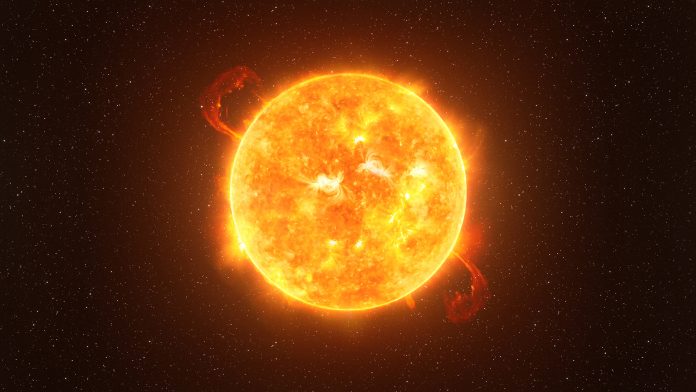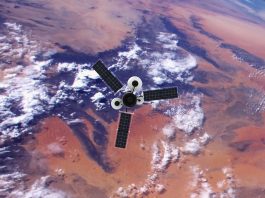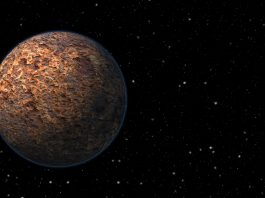The University of Leicester’s Beatriz Sánchez-Cano speaks to International Editor Clifford Holt about how her STFC Ernest Rutherford Fellowship will allow her to conduct high-level research that will have significant contributions to solar wind and space weather forecasting.
Mars and Earth are the only planets in our Solar System that we know host liquid water either in the surface or subsurface and are in the habitable zone of the Sun. Comparisons between them, and with other terrestrial planets, allow us to investigate the requirements for the habitability of a system. However, a critical aspect that determines the actual habitability of a planet is its interaction with the solar wind, the plasma from Sun’s atmosphere that expands away from the Sun. This interaction controls how and how much atmosphere is lost into space, how upper atmospheres dissipate energy from the solar wind, or how much radiation can reach the surface of a planet.
Dr Beatriz Sánchez-Cano will investigate the dynamic response of the Venus, Earth, and Mars upper atmospheres to solar wind and space weather. International Editor Clifford Holt spoke to her about how this approach will advance current understanding of habitability in the Solar System and inform robotic exploration and eventually human exploration of the Solar System.
Why is it important to get a better understanding of the solar wind? What are your thoughts on the insights provided by missions such as the Solar Orbiter?
The solar wind is plasma from Sun’s atmosphere that expands away from the Sun, filling interplanetary space. It constantly bombards all the planets and is also the medium through which larger solar storms (large sudden burst of solar plasma) propagate, driving strong planetary dynamics called ‘space weather’, which in turn cause technological and human threat issues. The solar wind interaction with planets strongly depends on the energy carried by the solar wind and on each type of planetary environment, such as magnetised or unmagnetised bodies. However, little is known beyond Earth. Moreover, understanding the solar wind evolution from the Sun and its interaction with each terrestrial planet is a key for understanding planetary habitability.
We are currently witnessing the largest era, so far, of the exploration of the innermost Solar System, mainly thanks to two solar missions: the European Space Agency’s Solar Orbiter and the NASA’s Parker Solar Probe. In addition, the first European-Japanese mission to Mercury, BepiColombo, is also continuously taking solar wind observations of the same part of the Solar System during its cruise-phase to Mercury, where it will arrive in late 2025. Together, the three missions are providing us with unprecedented information of a region of space barely explored before but which is nevertheless of significant importance for the entire Solar System as it is where the solar wind is created and where the fast deceleration and drag of major solar storms occur.
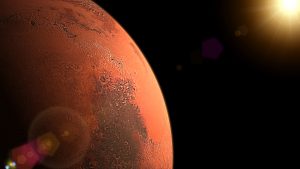
In this sense, missions such as Solar Orbiter have the capability of exploring the Sun at the closest ever distances, providing essential information to my research project as they inform us of key processes that provide the origin to the solar wind that later interacts with the planets, such as the mystery of how the Sun’s corona is heated.
Why were Venus, Earth, and Mars chosen for your new research project? What will you investigate and how? What do you hope/expect to find?
My research fellowship focuses on investigating the evolution of terrestrial planets’ upper atmospheres and how they interact with the solar wind. This is the atmospheric region which is partially ionised by solar radiation, i.e. the ionosphere, and it is in contact with space. The upper atmosphere-solar wind interaction is a critical aspect that determines the actual habitability of a planet as it controls atmospheric escape (e.g. Mars’ dehydration over time), energy dissipation (such as auroral processes and radio signal absorption), and controls the amount of space radiation that reaches the surface of a planet.
Each planet is a unique laboratory and has its own ‘personality’. For example, Venus and Mars do not have a global intrinsic magnetic field, and as a consequence their upper atmospheres are exposed directly to the solar wind. This interaction is much more intense at Mars because the Martian atmosphere is less dense than the Venusian one, allowing the solar wind to penetrate into the atmosphere more easily. This could be the reason why Mars’ atmosphere is currently being lost into space and why Mars lost the oceans that once were abundant at its surface.
On the contrary, Earth has a global intrinsic magnetic field (and so, a magnetosphere) that protects our atmosphere to a certain degree, as well as greatly reduces the amount of radiation that reaches our planet’s surface. In addition, we now know that Mars and Earth are the only planets in our Solar System that currently host liquid water, either at the surface (Earth) or subsurface (Mars), and are, together with Venus, in the habitable zone of the Sun. Therefore, in order to understand how a planetary system evolves over time, comparative planetology investigations are necessary. This is a very complex and challenging problem, particularly during space weather events, but a critical factor to understand the habitability conditions of a system.
My research project links the heliophysics and planetary science fields, transferring knowledge of the evolution of upper atmospheres from one planet to another. It will be done by studying the in-situ solar wind and solar transients as energy sources, and how the different upper atmospheres-magnetosphere systems respond to them (energy sinks) and evolve. It has two separate subprojects, one focusing on the solar wind with missions such as BepiColombo, Solar Orbiter, and the Parker Solar Probe, and a second focusing on the planetary systems with a combination of data analysis and numerical modelling. For this second subproject, data will come from a large number of spacecraft such as Mars Express, MAVEN, Swarm, and GNSS-GPS to name just a few, including the flybys to Venus that BepiColombo, Solar Orbiter, and the Parker Solar Probe are currently performing.
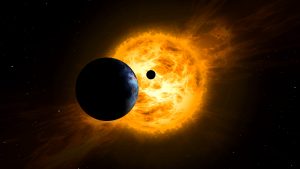
My ultimate expectation is to obtain the first holistic and coherent picture of the solar influence on terrestrial planets’ upper atmospheres in order to unveil their close interaction, which could have great benefits for society (e.g. space weather) as well as to support other missions at other bodies in our Solar System and beyond.
How could research such as this help to inform the robotic exploration and eventually human exploration of the Solar System?
This investigation will inform robotic exploration in a number of ways, all of them related to the impact of the solar wind and space weather on each planet. For example, solar storms are sources of intense short-term planetary variability, whose effects are possibly hazardous as they create large radiation showers via energetic particle precipitation into the atmosphere that can disrupt technologies on the surface of the planet as well as in orbit. Some examples are the ionospheric-induced scintillations produced in the radio links between GPS satellites or any other communications and navigational satellite networks, or the space weather impacts on railway infrastructure and electricity distribution grids. Moreover, these radiation showers are known to ionise regions of the middle atmosphere that are not typically ionised.
Radio frequency absorption in the lower ionosphere is one of the most common phenomena that occur, which affects high frequency (HF) operations and communications with and within the surface platforms. In contrast with Earth where HF malfunctions last of the order of few hours, at Mars these issues typically last on the order of several days (and even weeks). In order to minimise any harmful situations, an efficient and continuous upper atmosphere–magnetosphere–solar wind monitoring service is needed, not only for Earth where it is mandatory, but also for planets where significant robotic exploration is being undertaking.
In this frame, it is worth mentioning that we are on the eve of the human exploration of Mars, where communications between the surface and orbiters will be essential.

Given the number of exoplanets being discovered, could your research also help to shed light on a better defined habitable zone, in terms of the effects of the solar wind on a planet’s atmosphere?
Indeed! One of the main long-term outputs of my research is to support analogous research at other worlds and exoplanets. This is in support of missions such as BepiColombo at Mercury, JUICE at Jupiter and the Jovian system, or ARIEL for exoplanets. Our Solar System is very diverse and a unique laboratory from which we have much to learn. That knowledge can be extrapolated to understand other worlds that are at much further distances.
In particular, missions such as ARIEL will provide observations of the far distant atmospheric corona of exoplanets, one of the goals being to understand the physical processes shaping those exoplanetary atmospheres. To understand their atmospheric evolution and how they behave with respect to their host stars, as well as to define a more precise habitable zone, atmospheric modelling will be a necessary approach. My project is largely based on numerical simulations of the upper atmospheres and how they interconnect between layers from the ground to space. This expertise could in turn be used to model the exosphere hydrogen and oxygen coronas of exoplanets and get insights on their evolution with respect to their stellar winds. In this sense, my research fellowship is very timely because it will finish before ARIEL is launched, but also before BepiColombo and JUICE arrive to their respective planetary environments.
What are your long-term ambitions for the research enabled by the Rutherford Fellowship funding?
This Ernest Rutherford fellowship is a very precious opportunity for me to be able to consolidate my international leadership in the field and establish my own independent research line. It will provide me with five years of high-level research that will have significant contributions to space weather forecasting not only at Earth, but also at exploration target bodies such as Mars, as well as to other upcoming missions. Thanks to this, we will be able to identify our lack of knowledge and then be in the right position to propose new missions with specific targets to funding agencies such as ESA or NASA.
Dr Beatriz Sánchez-Cano
School of Physics and Astronomy
University of Leicester
bscmdr1@leicester.ac.uk
Tweet @PhysicsUoL
Tweet @BSCRedrojo
https://le.ac.uk/physics
Please note, this article will also appear in the seventh edition of our quarterly publication.

